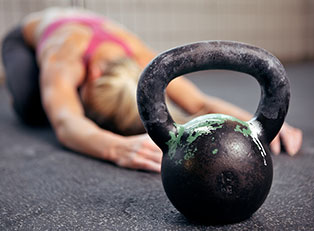Overview of High Intensity Interval Training
High intensity interval training (HIIT) has been steadily growing since its discovery in the 1970’s. Many trainers have switched to this type of training as the benefits have shown to be far beyond the traditional means of exercise routines. The main objective of this type of training is to spike the heart rate, then to rest briefly before bringing the heart rate back up again.
While the exact program you follow can vary, high intensity interval training schedules have the same basic makeup. First is a warm up period of exercise which loosens the muscles and gets the cardiovascular system up and running. Once you have had several minutes of warm up, you begin your interval training. First you to do your high intensity exercise and then follow it up with a medium or even low intensity exercise. The amount of repetitions and duration of the high and low intensity periods depends on the exercise. There is no specific regimen to high intensity interval training, but there are a few common practices of having a 1:2, 1:1, or a 2:1 ratio of exercise to recovery time. For example a 2:1 ratio might be 20-30 seconds of sprinting followed by 10-15 seconds of jogging or walking./
Weight training can be done the same way, do a set of 5 reps with maximum intensity followed by a very short rest, then do it again. When doing this type of muscle training, you should choose a weight that is about fifty percent of what you could normally do 10 reps of. Even though you might be using little weight, high intensity interval training helps build more muscle strength and power by stimulating the release of muscle building hormones in the body. Not only does this type of exercise build muscle, but it also helps to improve muscle endurance, enabling you to be stronger for longer. The most important part of doing high intensity interval training is to go as hard as you can for the duration of the work out, and to keep breaks to a minimal in order to keep your heart rate up and your body going at its maximum capacity.
Another great thing about this type of physical training is that a well constructed HIIT workout routine will improve cardiovascular fitness, endurance, and strength. It also decreases insulin resistance as well as reduce the risk for cardiovascular disease. Besides all of the many health benefits provided by this type of training, each workout takes less time than the normal workout of other types of training. Most other workouts can be an hour or more, but high intensity interval training is normally anywhere from 20-30 minutes long.
There are many different places to find this type of training. Tabata training is one of the many different types of high intensity interval training that are prevalent today. Tabata training uses 20 second bursts of training followed by 10 seconds of rest with 8 cycles for each set. Also, many at home workouts that are advertised on TV are or include some form of HIIT within their programs. Although there are a great many benefits to high intensity interval training, there are also a few things that you should know before deciding to start this type of training. First, if you have any previous health conditions, especially heart problems, then you should definitely consult your doctor to make sure that you are able to perform the required exercises. Also, it is important to not overdo it. The purpose of this type of training is to spike the heart rate, so long periods of exertion will have a negative effect on your training and results.
If your goal is to drop body fat or lose weight and you have a busy schedule, then HIIT could be a good choice for you. Studies have shown that HIIT actually provides better results for burning fat as well as providing faster weight loss. Why is that? HIIT workouts, which usually only last for 20-30 minutes and can be as short as 10 minutes, actually increase the metabolic rate for 24 to 48 hours after the workout is completed. This means that calories are being burned for a longer period of time after the workout is completed than in traditional workouts. In fact, studies have shown that a 20 minute high intensity interval training produces better weight loss results than a 30-60 minute workout on a treadmill.



